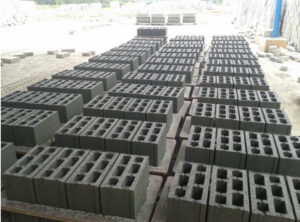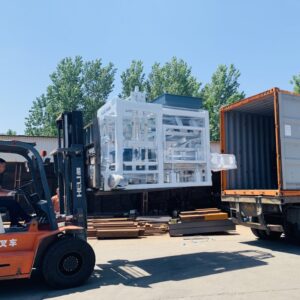
Concrete block production is a critical aspect of the construction industry, demanding adherence to rigorous technical standards.
In this Q&A, we delve into the intricacies of concrete block manufacturing, shedding light on the pivotal role played by semi-automatic brick-making machines in elevating the standards of the process.
Concrete Block Production: Technical Standards Q&A
Q1: What are the key technical standards in concrete block production?
A1: Technical standards encompass factors like block dimensions, compressive strength, and raw material quality.
Adhering to these standards ensures the production of durable and reliable concrete blocks, meeting construction requirements.
Q2: How does a semi-automatic brick-making machine contribute to meeting technical standards?
A2: Semi-automatic machines enhance precision in block production.
They ensure consistent dimensions and compressive strength, aligning with technical standards. Automated processes minimize variations, guaranteeing high-quality blocks.
Q3: What role does raw material quality play in meeting technical standards?
A3: Raw materials significantly impact block quality.
Semi-automatic machines facilitate meticulous control over material proportions, ensuring optimal mixtures that meet technical specifications.
This control is vital for achieving uniform block characteristics.
Q4: How does the semi-automatic process enhance efficiency in concrete block production?
A4: Semi-automatic machines streamline the production workflow. Automated processes, from material mixing to block formation, reduce manual labor, enhance efficiency, and contribute to meeting production timelines without compromising on quality.
Q5: Can semi-automatic machines accommodate variations in block design and specifications?
A5: Yes, the flexibility of semi-automatic machines allows for easy adjustments in block design and specifications.
This adaptability is crucial in catering to diverse construction needs and evolving market demands.
Q6: How do these machines contribute to sustainability in concrete block production?
A6: Semi-automatic machines promote sustainability by optimizing resource usage.
Precise control over raw material proportions minimizes waste, and the energy-efficient automated processes reduce the environmental footprint, aligning with sustainable practices.
Q7: What are the considerations for maintaining consistency in block color and texture?
A7: Semi-automatic machines excel in maintaining consistent color and texture.
Advanced features ensure uniform mixing, and precise molding guarantees blocks with standardized appearances, enhancing aesthetic appeal in construction projects.

Q8: Can semi-automatic machines be integrated into existing production lines?
A8: Yes, semi-automatic machines are designed for seamless integration.
Their modular nature allows easy incorporation into existing production lines, offering manufacturers the flexibility to upgrade without disrupting ongoing operations.
Q9: How do these machines contribute to workforce safety in block production?
A9: Automation in semi-automatic machines reduces manual handling of heavy materials, minimizing the risk of injuries.
Safety features and ergonomic designs prioritize the well-being of the workforce, fostering a secure production environment.
Q10: What role does quality control play in ensuring compliance with technical standards?
A10: Quality control is paramount in meeting technical standards.
Semi-automatic machines often come equipped with advanced monitoring systems, enabling real-time quality checks during production, ensuring each block meets the specified standards.

Semi-automatic brick-making machines emerge as indispensable allies, elevating the efficiency, quality, and sustainability of the manufacturing process.
As the construction industry evolves, these machines play a pivotal role in shaping the future of concrete block production.
